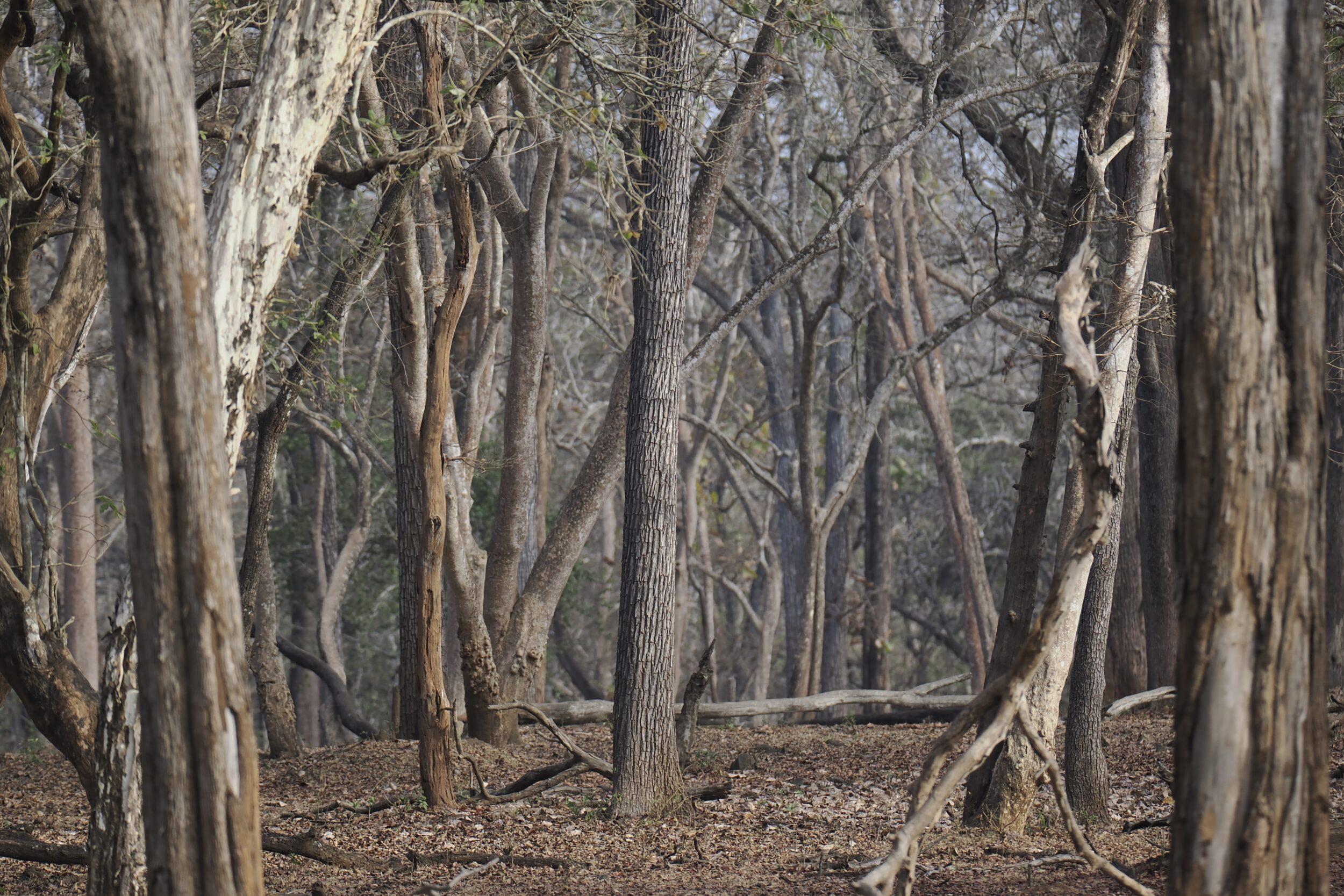If you wish to see tigers “in the wild”, India is your best destination.
It contains circa 25% of the world’s remaining tiger habitat, but India is currently home to around 75% of “our” globe’s wild tigers.
There is no such thing as a reliable estimate of India’s wild tiger population, let alone the world’s.
The likely-best available figures come from the Global Tiger Forum.
On 10 September 2023, Global Tiger Forum published its latest global estimate: 5,574.
That is 74% higher than their 2010 figure. (click here for more detail)
It is impossible to know how much of the apparent increase reflects better monitoring rather than actual increase.
That said, there are grounds for believing that in some nations – India, especially – wild tiger numbers really are rising, after many years of steep decline towards seemingly-inevitable extinction.
This little series looks at Nagarhole Tiger Reserve in Karnataka, south India.
The featured image and the one immediately below show what the local tiger habitat looks like.
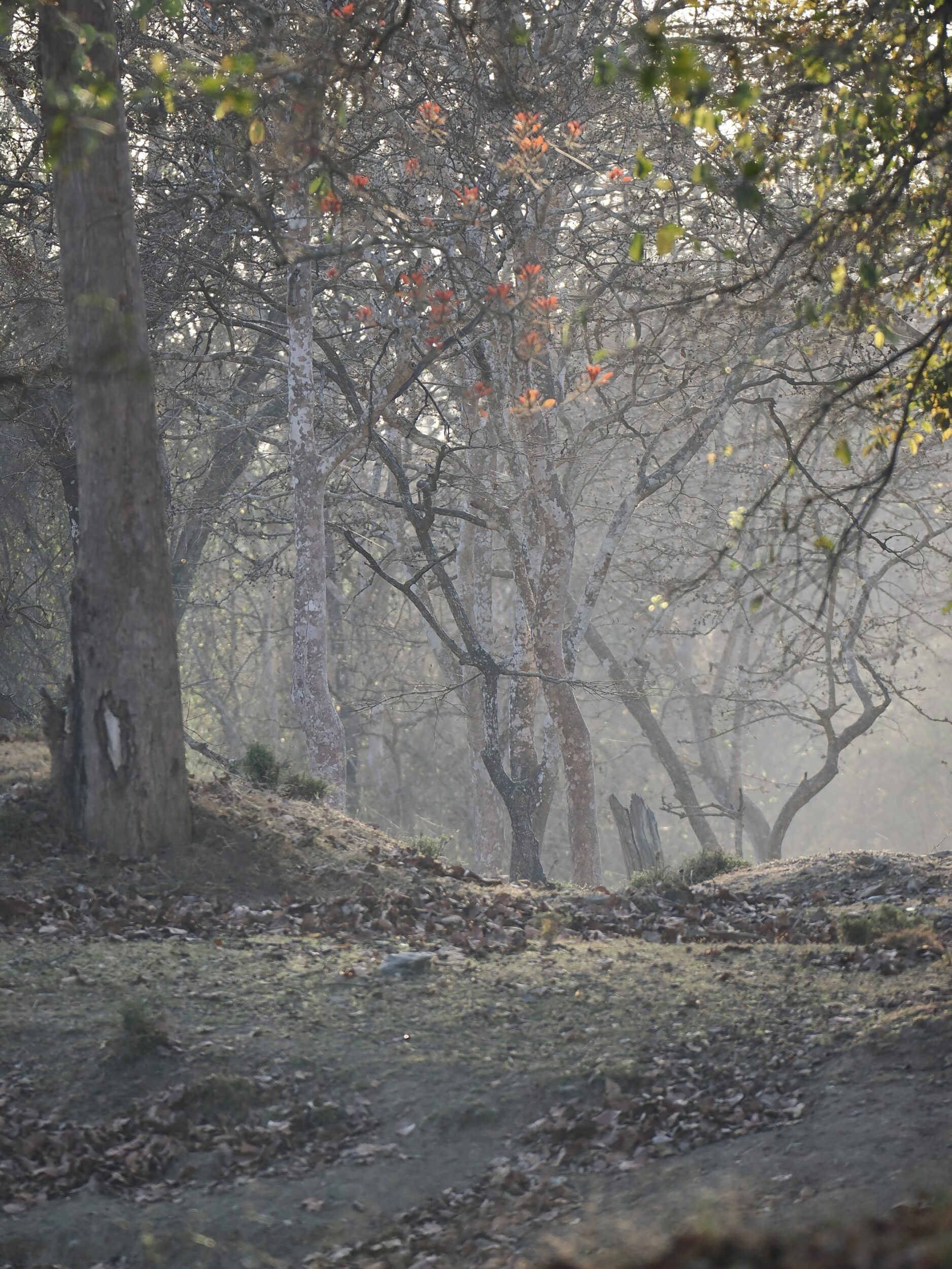
Much of Nagarhole Tiger Reserve is undulating terrain, covered with deciduous forest.
Deciduous forests are not peculiar to places with long, cold winters; dropping all or most of one’s leaves for a significant part of the year is also a good move for a tropical tree in a monsoonal climate, where rainwater is abundant in the “wet season”, but largely absent in the “dry”.
if we had visited Nagarhole during the “wet”, its forests would have presented an enormously lusher, greener “face”.
Nagarhole offers excellent tiger habitat, with abundant game.
According to the best tiger book I know of:
Once human hunters were kept out, Asian tropical deciduous forests like Nagarhole, turned into virtual supermarkets for the predators.
Accordingly, Nagarhole’s tiger population is relatively dense.
Biologically, its tigers are almost entirely alike to those in Russia’s Far East, but an individual Nagarhole tiger’s territory is twenty to thirty times smaller than an Amur tiger’s.
As we experienced on our very first early morning game drive, in Nagarhole it is not at all difficult to see a tiger’s pug mark – the print left by one of its huge feet.
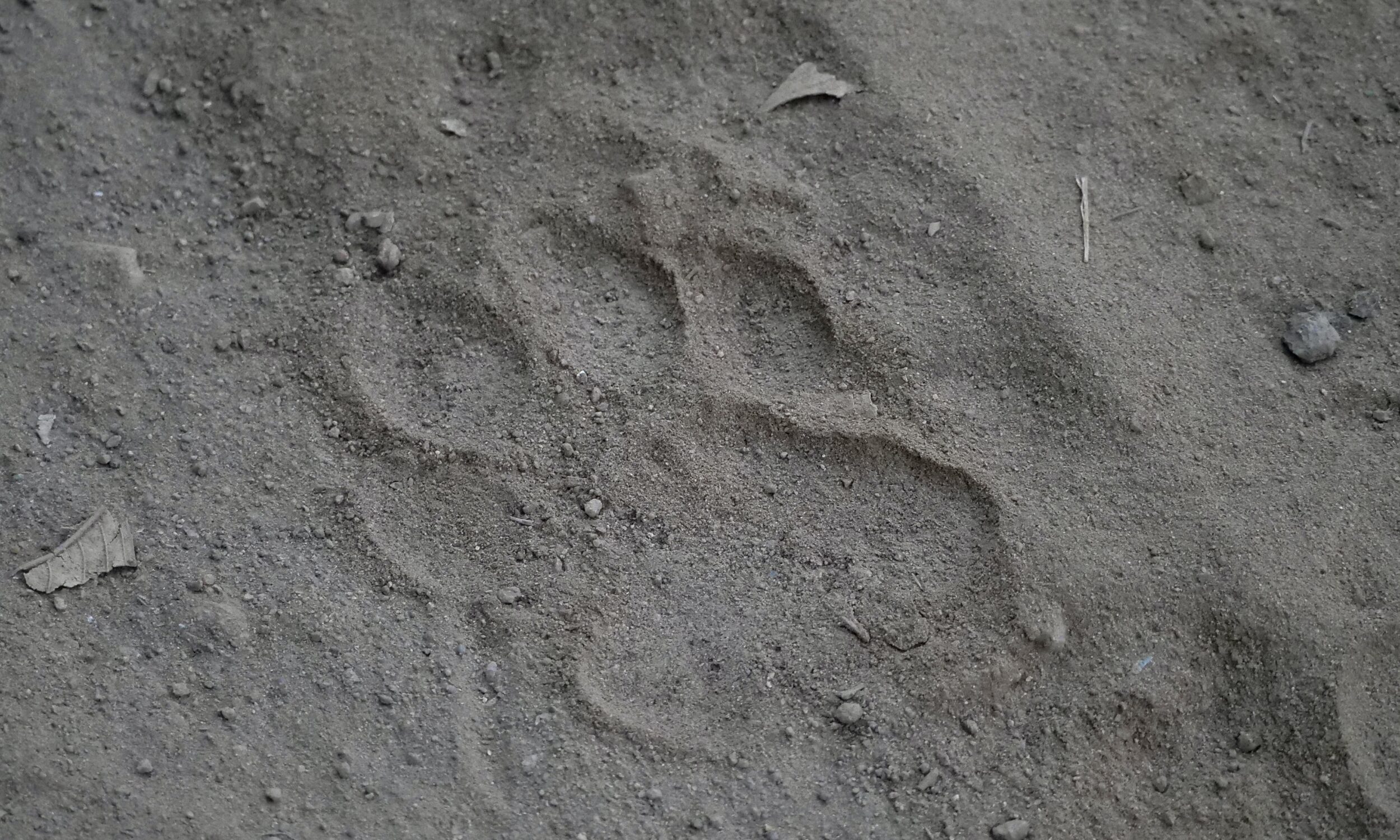
In Nagarhole, a single tiger kills about fifty prey animals a year.
As the aforementioned book says:
To produce such an annual “dividend”, there had to be sufficient “capital” of prey animals….that capital works out to five hundred prey animals, from which the tiger draws its 10 percent dividend….This iron rule explains why there were ten to fifteen tigers per one hundred square kilometres…in contrast to just one to two tigers in the snowbound Russian taiga, or for that matter, in any habitat where prey density was depressed by human hunters.
Tigers are extremely good at hiding.
“Ten to fifteen individuals per one hundred square kilometres” is very dense, in tiger terms.
In “human, seeking to see an expertly-elusive species in forested terrain” terms, however, it looks like very long odds.
And if a human “gets lucky”, is in “the right place” when a tiger crosses a road/track, chances are excellent the sighting will be distant, fleeting…as proved true just over one hour after we had excitedly observed “our” first tiger pug mark.
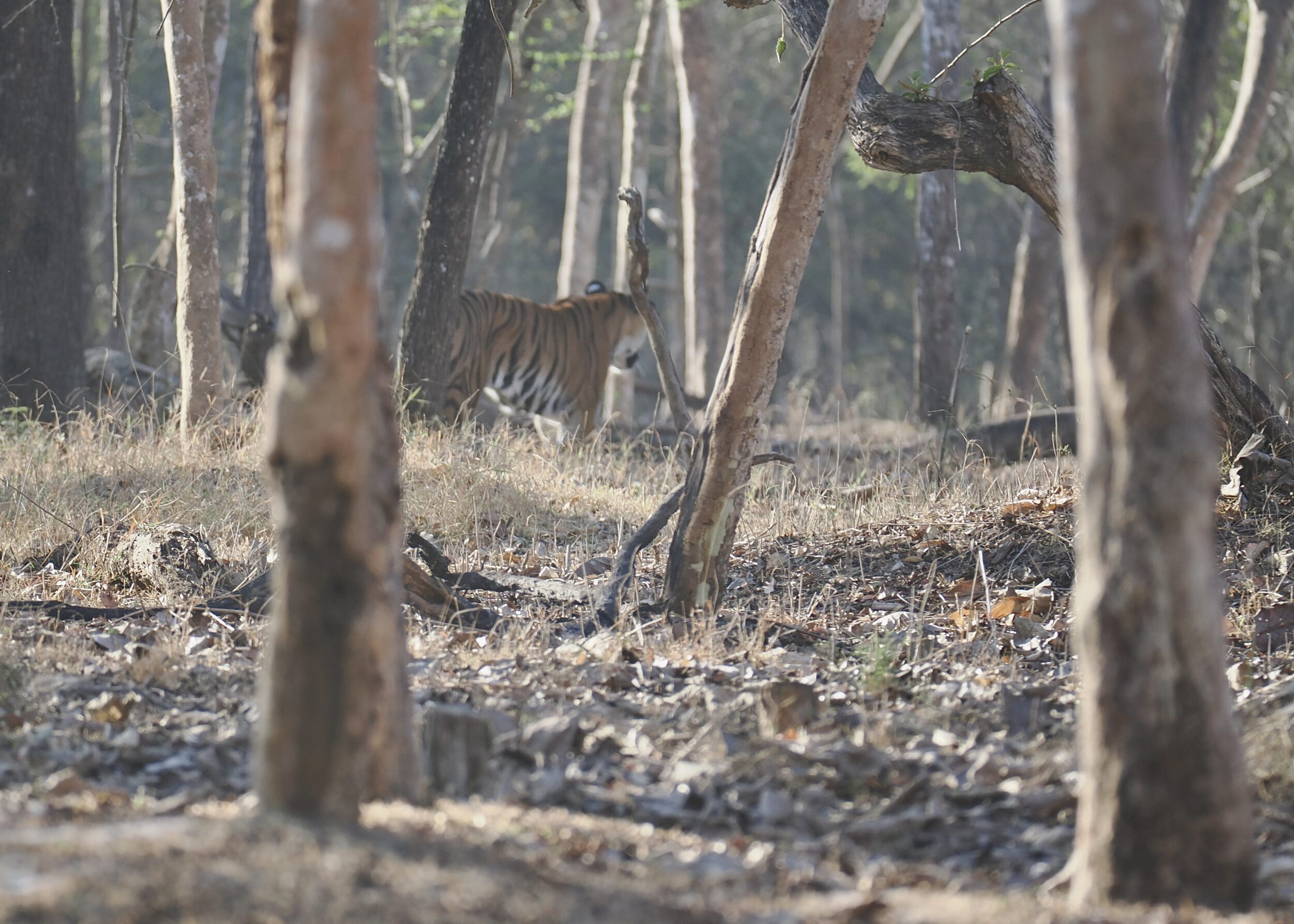
By the time the human’s eyes and camera are appropriately directed, the tiger is probably rapidly disappearing into “the forests of the non-cooperative daylight”.
(William Blake notwithstanding, tourist humans are strictly “daytime only” visitors to tigers’ territory)
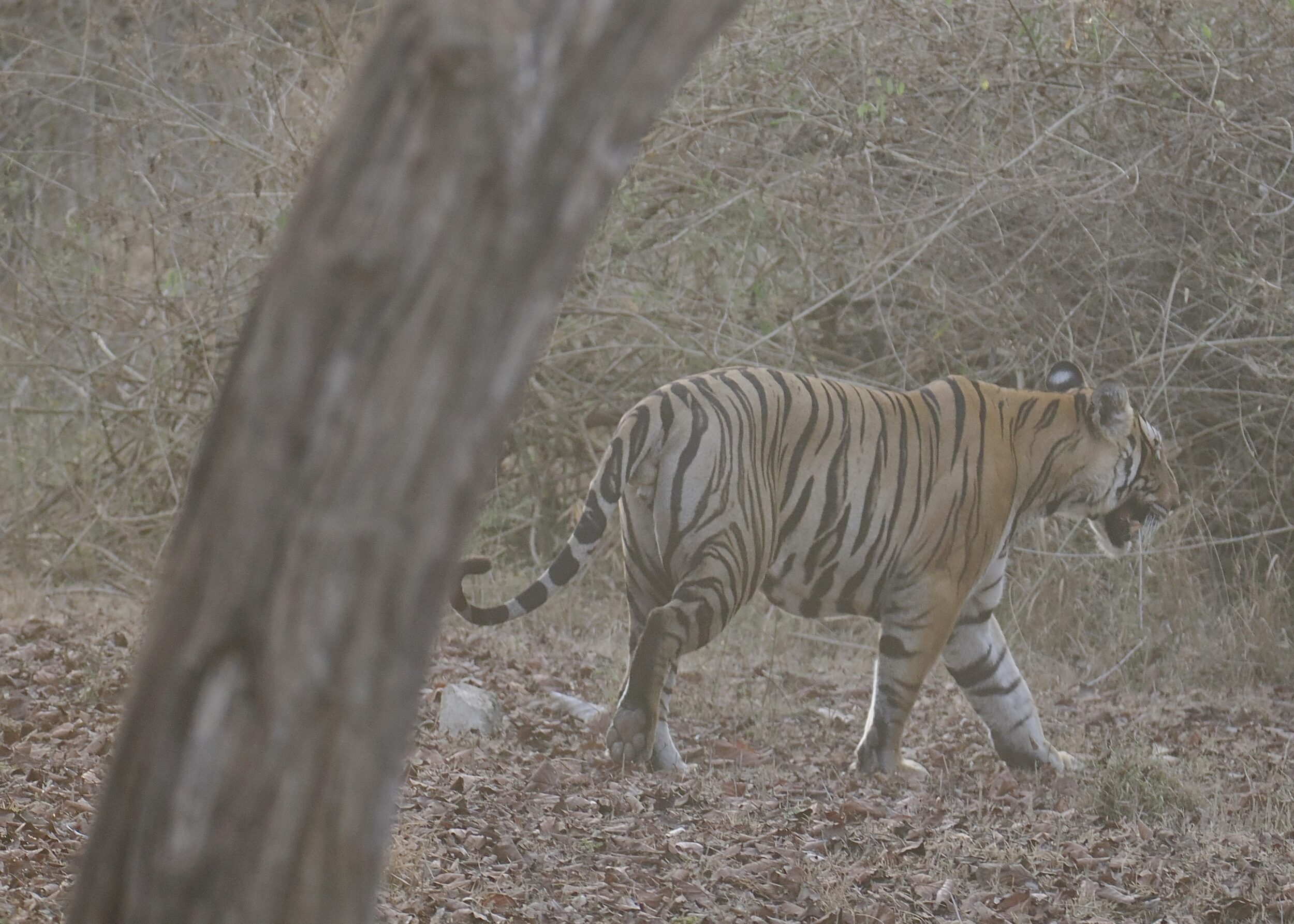
Our second tiger sighting occurred on the third of nine game drives in Nagarhole; we stayed five nights (a few ks outside the Reserve-proper), and the first few and last few hours of each available day’s daylight were devoted to “hunting” wildlife.
Until late in the afternoon of our eighth game drive, it looked likely that we were not going to enjoy a close encounter of the tiger kind.
As you will see in #3 of this series, we then had a wonderful one.
However, if that happy circumstance had failed to occur, we would still have had a wonderful, wildlife-rich time.
For example, in the hour between “our” first tiger footprint and “our” first, fleeting tiger, we enjoyed our first encounter with one of domestic chooks’ wild, Junglefowl ancestors.
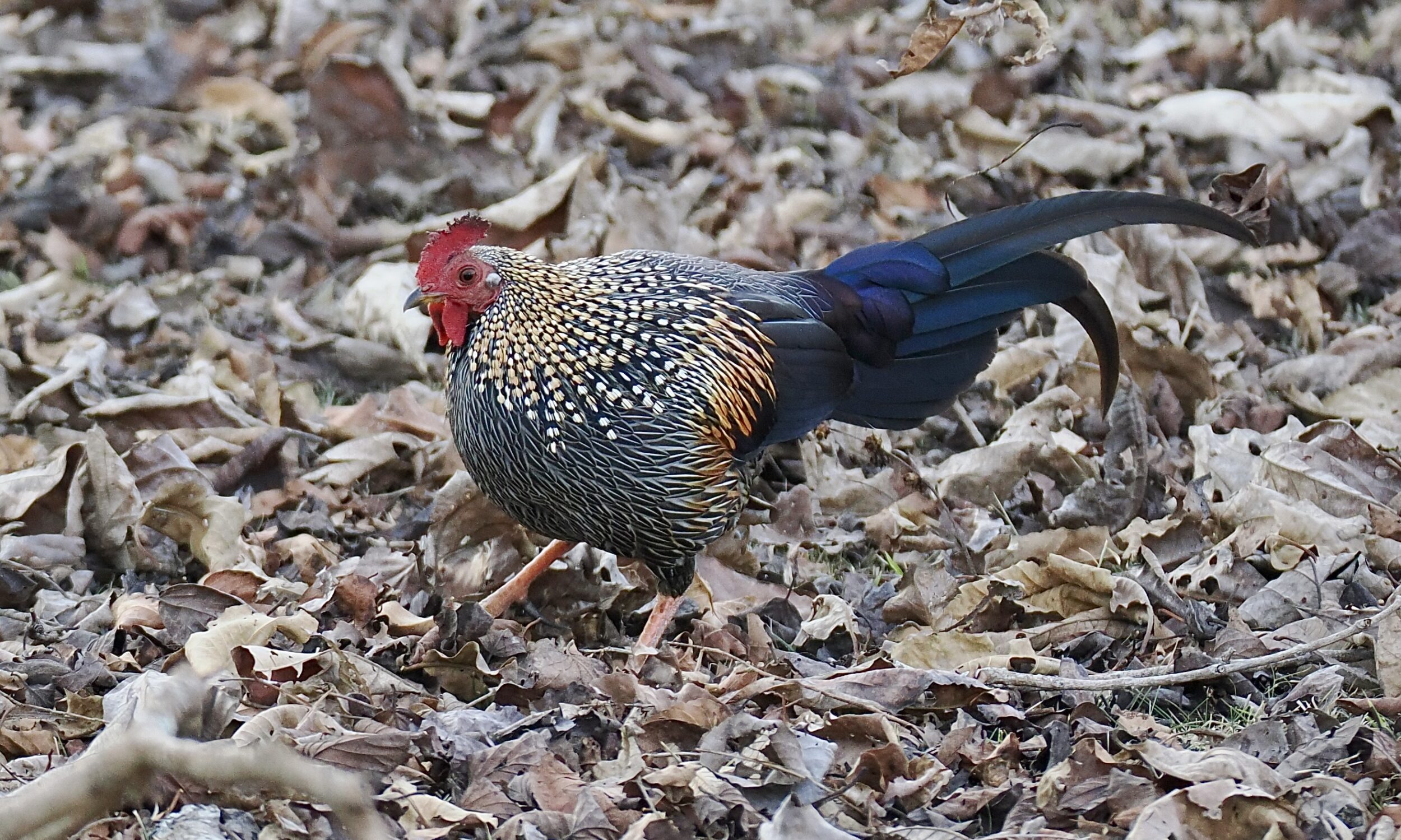
Key advice to anyone who “goes tiger-hunting, out in India”: pay attention to everything.
Even if you fail to gain even a glimpse of a wild tiger, in any Indian Tiger Reserve, all attentive visitors will surely enjoy a great many unforgettable wildlife experiences.
You are rather more likely to see a leopard in India than in Africa, India also has elephants, and its (different) antelopes, other mammals, birds, reptiles and insects are every bit as beautiful/fascinating/surprising as Africa’s…..
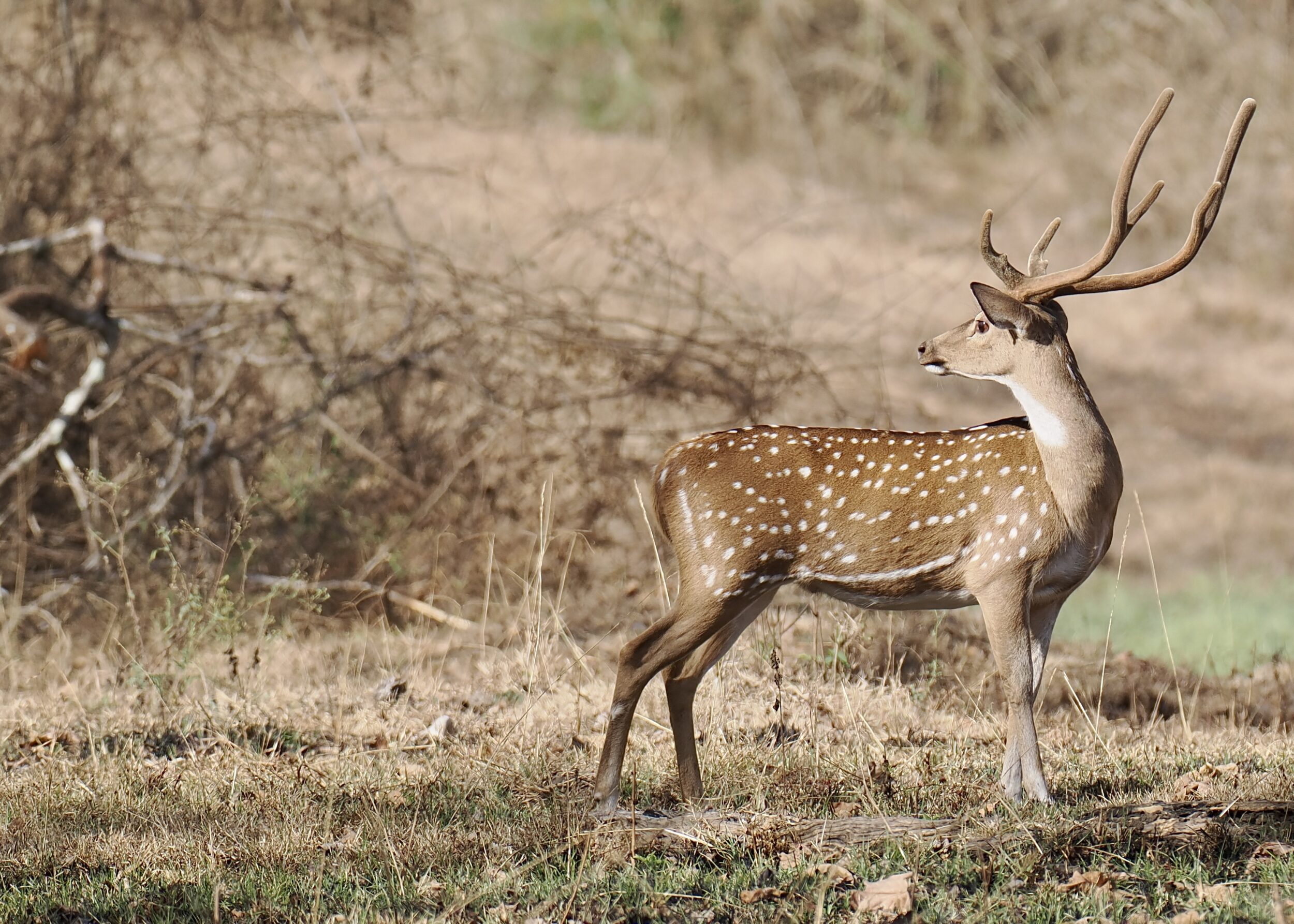
Notice the Chital’s ears?
They are a little pointer to #2 in this series; whether one is a prey animal – trying to avoid becoming part of a tiger’s “dividend” – or a human – eager to see a tiger – effective deployment of one’s ears is the best way to boost one’s chance of success.
